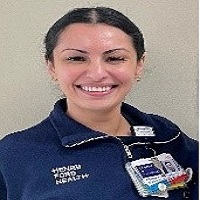
Deandre Duggal
Eastern Michigan University, United States
Abstract Title: Understanding the factors that influence mode of arrival in patients with stroke symptoms
Biography:
I am a Master of Science in Nursing-Clinical Nurse Specialist (CNS) student nearing graduation with a focus on neuroscience and emergency medicine with a background in emergency medicine, I bring experience in acute patient assessment, evidence-based practice, and system-level quality improvement initiatives. I have participated in clinical research exploring patient decision-making in emergency stroke care, emphasizing timely intervention and outcomes optimization. Passionate about advancing nursing practice, I integrate consultation, leadership, and education to support interdisciplinary teams and enhance patient-centered care. I am committed to fostering clinical excellence and preparing for CNS certification and practice.
Research Interest:
Stroke remains a leading cause of death and long-term disability globally, with rapid recognition and timely treatment being critical determinants of recovery. The concept “time is brain” underscores the importance of early intervention and activation of emergency medical services (EMS). Despite guideline recommendations, fewer than two-thirds of stroke patients consistently use EMS, contributing to treatment delays and worse outcomes. This exploratory mixed-methods study at the Henry Ford Health System Stroke/Telemetry Unit (September–October 2025) examined factors influencing patients’ choice of EMS versus private vehicle transport. Fifty-one participants completed structured surveys with optional open-ended questions assessing demographics, stroke knowledge, symptom perception, transport mode, and barriers to EMS use. Quantitative data were analyzed descriptively, and qualitative responses underwent thematic coding. Results indicated that 56.9% of participants arrived via EMS, while 41.2% self-transported. The mean age was 64.4 years, and 60.8% were male. Most participants (86%) sought care within one hour of symptom recognition. Primary motivators for EMS use included recognition of a medical emergency and external prompting, whereas self-transport was influenced by proximity, perceived symptom mildness, and cost concerns. Five qualitative themes emerged: perceived urgency and fear, influence of others, uncertainty about severity, financial/logistical concerns, and retrospective reflection. Findings suggest that practical and social factors, rather than knowledge alone, are the strongest determinants of EMS activation, aligning with recent evidence linking social and systemic influences to delays in stroke care (Forman et al., 2024; Hazelton et al., 2024; Zhou et al., 2025). Targeted education, community engagement, and addressing cost and logistical concerns may improve timely EMS use and equitable stroke care delivery.
Keywords: Stroke, EMS activation, Patient decision making, Timely treatment, Social determinants of health.

